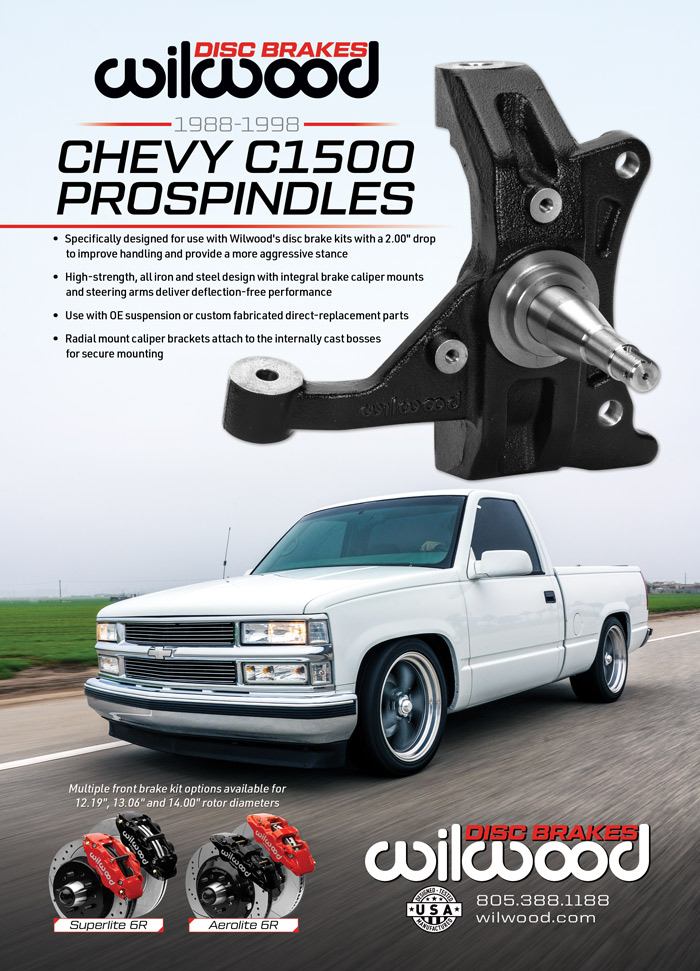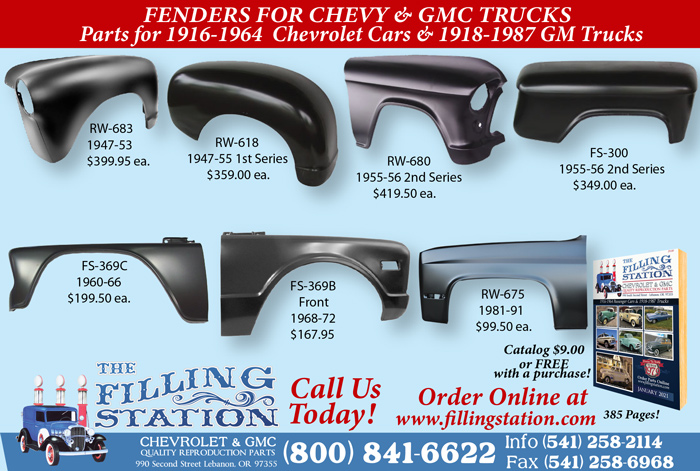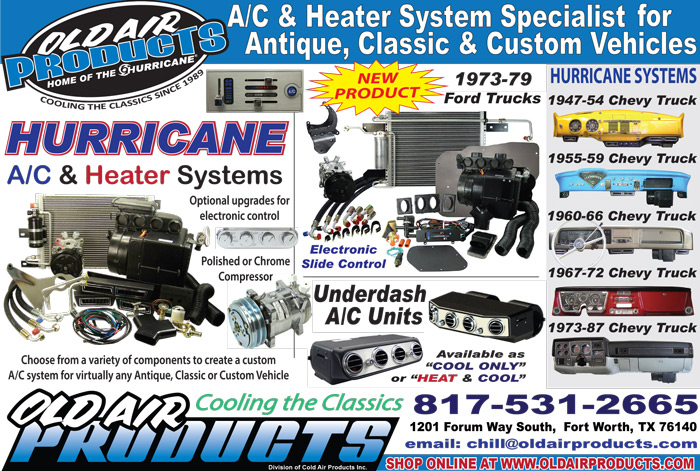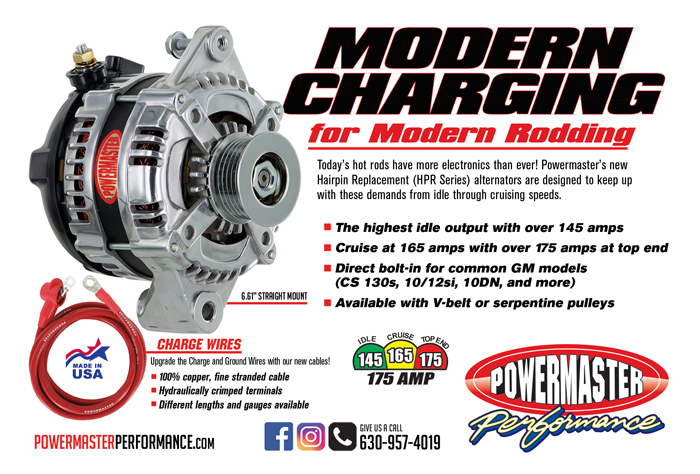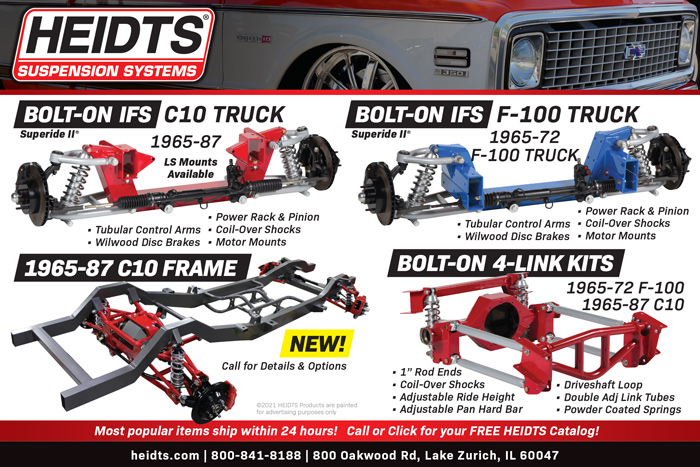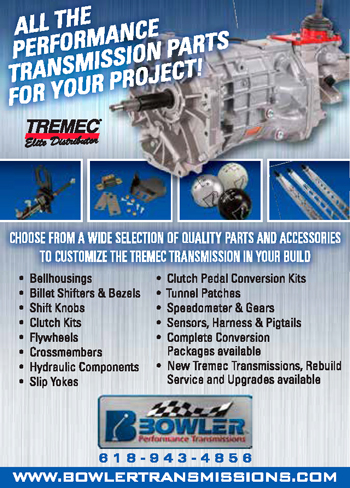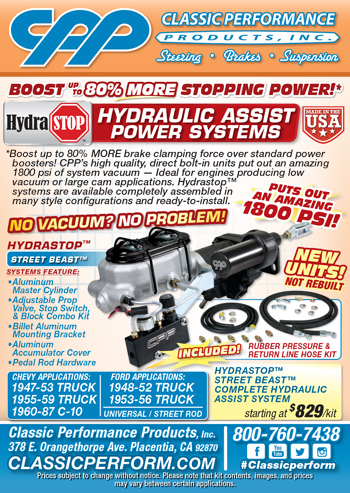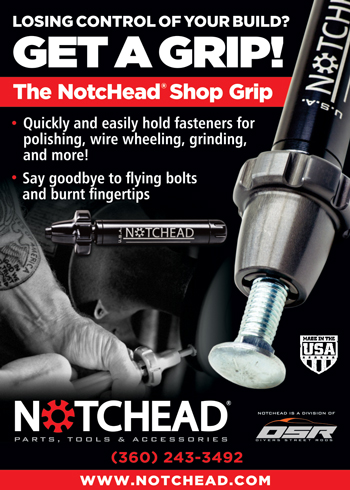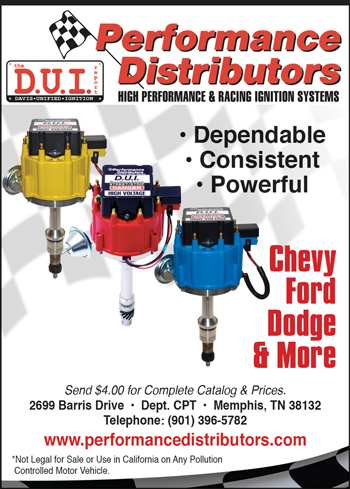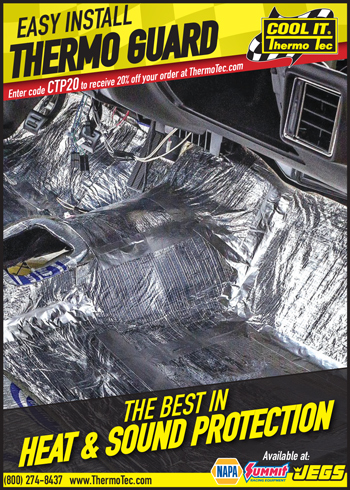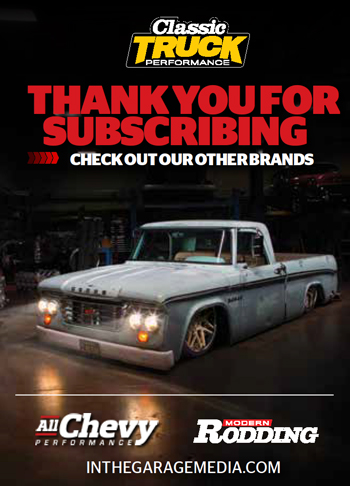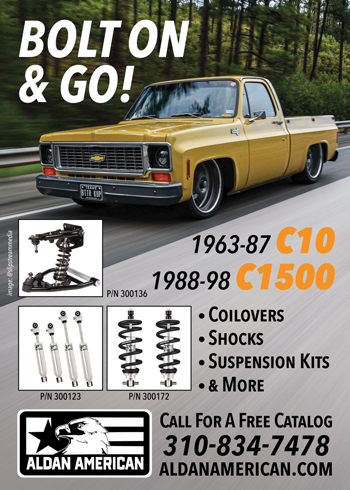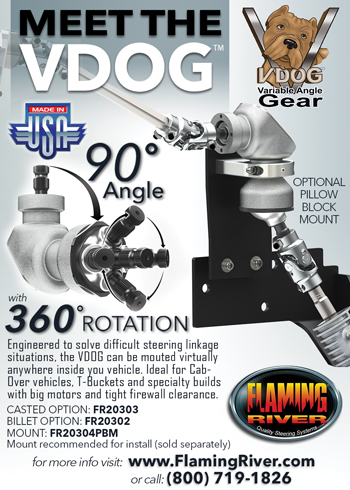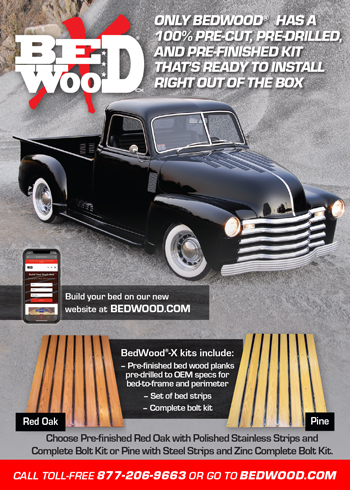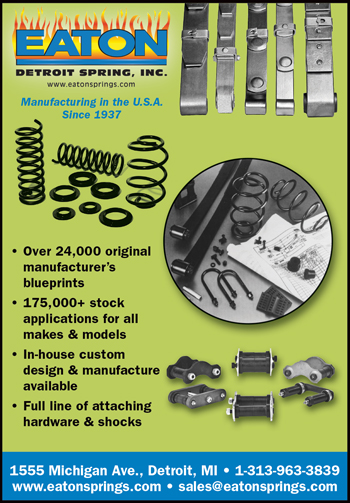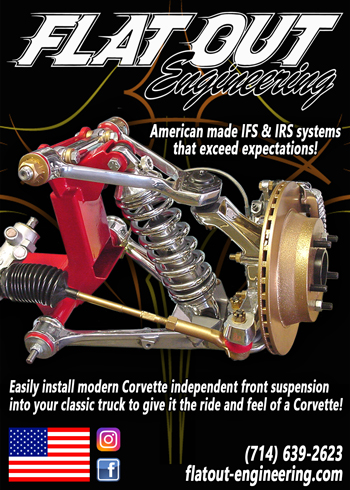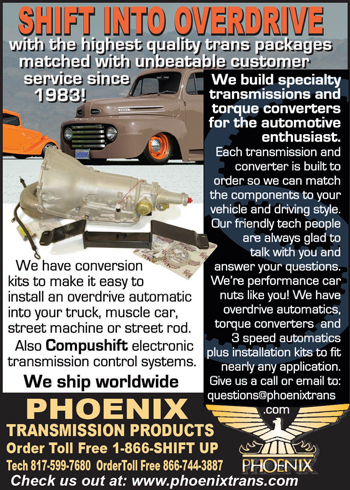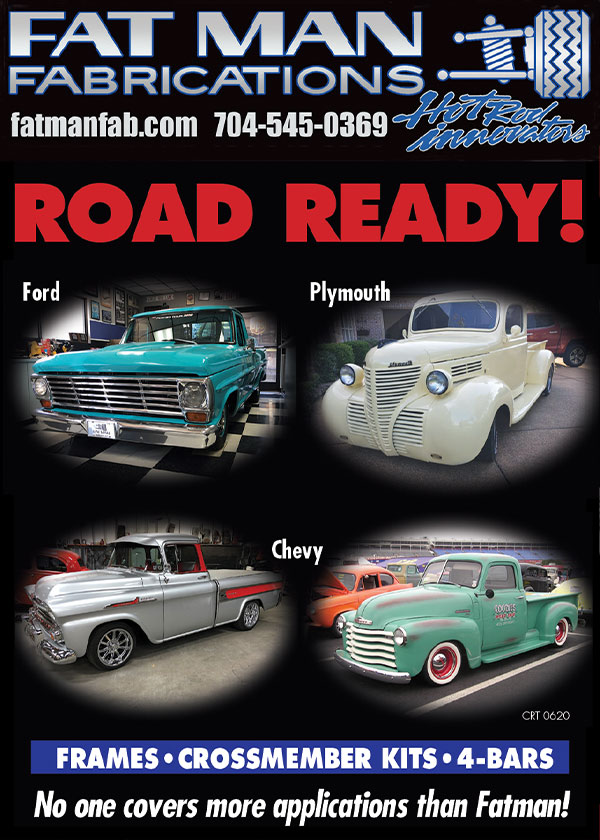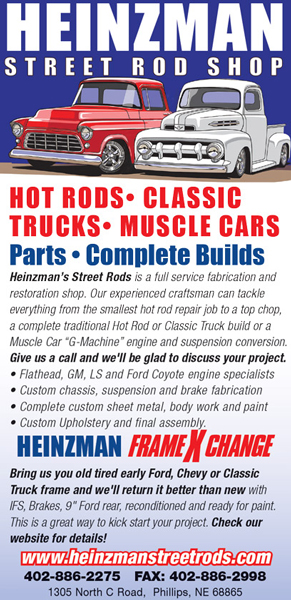
 TOC
TOC Feature of the month
Feature of the month
Rodney Bauman, Fuelish Media, Daron Gray, Ryan Manson, Travis Scanlan, Chuck Vranas

ROB MUNOZ
Rodney Bauman, Tommy Lee Byrd, Ron Ceridono, Michael Christensen, Ron Covell, Grant Cox, Dominic Damato, John Drummond, Eric Geisert, Joe Greeves, John Jackson, Barry Kluczyk, Scotty Lachenauer, Ryan Manson, Josh Mishler, Todd Ryden, Chris Shelton, Tim Sutton, Chuck Vranas – Writers and Photographers
Mark Dewey – National Sales Manager
Janeen Kirby – Sales Representative
Patrick Walsh – Sales Representative
Travis Weeks – Sales Representative
ClassicTruckPerformance.com
ModernRodding.com
AllChevyPerformance.com
InTheGarageMedia.com
subscriptions@inthegaragemedia.com
ads@inthegaragemedia.com
info@inthegaragemedia.com
Editorial contributions are welcomed but editors recommend that contributors query first. Contribution inquiries should first be emailed to info@inthegaragemedia.com. Do not mail via USPS as we assume no responsibility for loss or damage thereto. IN THE GARAGE MEDIA reserves the right to use material at its discretion, and we reserve the right to edit material to meet our requirements. Upon publication, payment will be made at our current rate, and that said, payment will cover author’s and contributor’s rights of the contribution. Contributors’ act of emailing contribution shall constitute and express warranty that material is original and no infringement on the rights of others.
The Classic Truck Performance trademark is a registered trademark of In The Garage Media.
Classic Truck Performance. February 2021, Vol. 2, No. 2 is published monthly by In The Garage Media.
1350 E. Chapman Ave. #6650, Fullerton, CA 92834-6550.


 Still Hammerin’
Still Hammerin’elcome to 2021—I think?! We’re a month into the new year, and while I’ll reserve myself from saying things are off to a good start in the overall scheme of things, I will say we’re off to a great start here at In The Garage Media!
Why/how is that, you ask? Well, let me start off by announcing that the ITGM Tech Center is now a thing. That’s right, we’re now officially bona fide when it comes to being a full-fledged enthusiast media company, from the magazines right down to the facility in which we produce them … which now includes a fully equipped, fully functional shop, sponsored by Harbor Freight and Duralast!

 Picking Up
Picking Up
ight now you are reading the February issue of Classic Truck Performance, making it already feel as if this year is moving along at a rapid pace. As such, we are well into the New Year of 2021 as we begin production on the March issue of Modern Rodding. It’s also been a year since we have had to deal with COVID. I’m sure all of us have in some way made concessions to our daily lives to get through and get through safe and healthy. I will say one of my ways to cope was to spend more time with my 1972 Suburban and fix a handful of little “need to do” items that I never seemed to have time to otherwise fix. Alas, it’s proving to be a great running, driving, and handling truck. So, something good has come from all of this “enclosure” each of us has had to endure.

 Parts Dept
Parts Dept

 Feature
Feature
 PHOTOGRAPHY BY the Author
PHOTOGRAPHY BY the Authorhat first started out as a basic “restore” project eventually turned into a true all-gas no-brakes redesign and build on Fred Bishop’s 1971 F-100. This truck once belonged to his wife’s uncle who was an avid camper, fisherman, and Ford fanatic. Every outdoors trip began by packing the F-100 with all the necessary goods he’d need while roughing it in the wilderness. Fred remembers riding in the truck with Uncle Dave back then when it was bone stock. Now that he was blessed with the opportunity to give the truck new life, he has tried to make the most of it—no matter what came up throughout the three-year build process.

 Feature
Feature
 PHOTOGRAPHY BY the Author
PHOTOGRAPHY BY the Authorhat first started out as a basic “restore” project eventually turned into a true all-gas no-brakes redesign and build on Fred Bishop’s 1971 F-100. This truck once belonged to his wife’s uncle who was an avid camper, fisherman, and Ford fanatic. Every outdoors trip began by packing the F-100 with all the necessary goods he’d need while roughing it in the wilderness. Fred remembers riding in the truck with Uncle Dave back then when it was bone stock. Now that he was blessed with the opportunity to give the truck new life, he has tried to make the most of it—no matter what came up throughout the three-year build process.

 Tech
Tech
 PHOTOGRAPHY BY The Author
PHOTOGRAPHY BY The Author
hen it comes to aftermarket air conditioning systems, the traditional beadlock fitting has been the industry standard since Vintage Air developed their first kit some 40-plus years ago. They provide a reliable, leak-free crimp and are available in a myriad of configurations. But the hose and fittings are bulky and require a single-purpose beadlock hose crimper with the corresponding dies for each hose size, of which there are typically three (#6, #8, and #10). For the homebuilder who wants to DIY his own A/C hoses, an expensive crimping tool and dies must be purchased or the crimping of the A/C hoses must be outsourced to a local automotive A/C shop. But there is an alternative to those bulky, specialty fittings that is actually easier to install, takes up less real estate, looks cleaner, and uses a smaller diameter, more flexible hose: the EZ Clip system.

 Feature
Feature PHOTOGRAPHY BY the Author
PHOTOGRAPHY BY the Author
ormally the writer of a magazine feature article isn’t supposed to talk about himself in the first person; this is not one of those times. The 1971 Chevrolet C10 built by Ryan “Ryno” Lieberman of Ryno Built Rod & Custom in Southwest Missouri that you see before you is named “Brown Shuga,” and it almost ended up in the crusher. That’s where I come into the story.
In the spring of 2018 I saw this sad, derelict, stripped C10 with a title on Facebook for $200 about 45 minutes from my home with the note that if it wasn’t gone by morning it was going to the crusher. Well, I couldn’t let that happen. The truck was bought and brought out to my dad’s farm and dropped off in a tree line to someday be rebuilt alongside a few more “someday” projects.

 Tech
Techlowers are not for everyone—nor are they for every engine. They’re cool to look at, they sound bitchin when they whine at high rpm, and they definitely have the ability to exponentially boost performance, no pun intended. But they have their downsides as well: hefty investment and potential to cause unwelcome damage to an underlying reciprocating system (your engine) if not properly prepared for said forced induction.
Positive-displacement superchargers—aka, Roots-style blowers—have been around a long, long time … since the late 1800s to be exact. Originally developed by the Roots Brothers, Francis and Philander, as a means in which to improve air movement in metal-smelting blast furnaces, the idea was actually first implemented for automotive use by Gottlieb Daimler, and subsequently put into production on Mercedes-Benz models by the 1920s. It wasn’t long after that hot rodders began “borrowing” the idea of engine-driven forced induction to help boost performance for street racing, dry lakes racing, and eventually sanctioned drag racing—by scavenging GMC industrial-purpose Roots blowers and facilitating a means in which to forcibly induct mass air into their Flathead V-8s and early OHV engines. Next came the centrifugal superchargers, which effectively served the same purpose, however more efficiently and from within a more compact package.



lowers are not for everyone—nor are they for every engine. They’re cool to look at, they sound bitchin when they whine at high rpm, and they definitely have the ability to exponentially boost performance, no pun intended. But they have their downsides as well: hefty investment and potential to cause unwelcome damage to an underlying reciprocating system (your engine) if not properly prepared for said forced induction.
Positive-displacement superchargers—aka, Roots-style blowers—have been around a long, long time … since the late 1800s to be exact. Originally developed by the Roots Brothers, Francis and Philander, as a means in which to improve air movement in metal-smelting blast furnaces, the idea was actually first implemented for automotive use by Gottlieb Daimler, and subsequently put into production on Mercedes-Benz models by the 1920s. It wasn’t long after that hot rodders began “borrowing” the idea of engine-driven forced induction to help boost performance for street racing, dry lakes racing, and eventually sanctioned drag racing—by scavenging GMC industrial-purpose Roots blowers and facilitating a means in which to forcibly induct mass air into their Flathead V-8s and early OHV engines. Next came the centrifugal superchargers, which effectively served the same purpose, however more efficiently and from within a more compact package.


 Feature
Featurehough often time-consuming and a bit frustrating when the creative juices are in drought season, the part of my job I usually love most is writing—especially the features, as such. Getting to tell the backstory on any particular vehicle, or even on any particular builder and/or owner, is a welcomed experience on my behalf. That said, however, I also welcome the opportunity for those same owners and/or builders to tell their story themselves. Such is the case with Kevin and Sally Smith’s old-school Chevy 3100 built by Young at Heart Customs. Here’s how the “SaKe Blue” beauty came to be in Kevin’s own words:
BY Rob Fortier & KEVIn SMITH PHOTOGRAPHY BY Daron Gray
PHOTOGRAPHY BY Daron Gray
BY Rob Fortier & KEVIn SMITH PHOTOGRAPHY BY Daron Gray
PHOTOGRAPHY BY Daron Gray

hough often time-consuming and a bit frustrating when the creative juices are in drought season, the part of my job I usually love most is writing—especially the features, as such. Getting to tell the backstory on any particular vehicle, or even on any particular builder and/or owner, is a welcomed experience on my behalf. That said, however, I also welcome the opportunity for those same owners and/or builders to tell their story themselves. Such is the case with Kevin and Sally Smith’s old-school Chevy 3100 built by Young at Heart Customs. Here’s how the “SaKe Blue” beauty came to be in Kevin’s own words:

 Tech
Tech
 BY “Rotten” Rodney Bauman
BY “Rotten” Rodney Baumanall been done before!” Yes, we’ve heard that said, but let’s be open-minded here. Granted, walking through a custom car show won’t likely trigger novel notions, but walking through a wrecking yard still can. For Colten Hart, of Kalispell, Montana’s Vintage Soul Garage, that’s exactly how his custom taillight treatment came to mind—by walking 40 acres of elderly cars and trucks. We’ll circle back around to that, in just a bit or two.

 Feature
FeaturePesko’s 1940 Ford
Nails the Look
here’s nothing better than building a classic truck that will see endless miles once completed. Getting there takes focus to incorporate a formula that fuses just the right amount of style with performance, stance, and dependability to ensure plenty of trouble-free enjoyment once you hit the streets. Derrick and Katie Pesko, of Waterford, Connecticut, have spent plenty of time sharing the driver seat as they crisscrossed the country in a number of their hop-ups. As the owners of Allstar Hot Rods it’s the perfect way to showcase their builds. Let’s take a look at what makes this 1940 Ford hauler packed with a classic ’60s vibe just so cool.
 PHOTOGRAPHY BY THE AUTHOR
PHOTOGRAPHY BY THE AUTHOR

 Feature
Feature
 PHOTOGRAPHY BY THE AUTHOR
PHOTOGRAPHY BY THE AUTHORhere’s nothing better than building a classic truck that will see endless miles once completed. Getting there takes focus to incorporate a formula that fuses just the right amount of style with performance, stance, and dependability to ensure plenty of trouble-free enjoyment once you hit the streets. Derrick and Katie Pesko, of Waterford, Connecticut, have spent plenty of time sharing the driver seat as they crisscrossed the country in a number of their hop-ups. As the owners of Allstar Hot Rods it’s the perfect way to showcase their builds. Let’s take a look at what makes this 1940 Ford hauler packed with a classic ’60s vibe just so cool.

 In the Shop
In the Shop
BY Chuck Vranas Photography By The Author
Photography By The Author
hile on the road recently for Classic Truck Performance, our path led us to Chris Cerce Customs in Taunton, Massachusetts, to check out some of the latest projects being worked on for the new season. Upon arrival, we entered the final assembly area and were immediately awestruck by the cool combination of rides being completed.


 In the Shop
In the Shop
BY Chuck Vranas Photography By The Author
Photography By The Author
hile on the road recently for Classic Truck Performance, our path led us to Chris Cerce Customs in Taunton, Massachusetts, to check out some of the latest projects being worked on for the new season. Upon arrival, we entered the final assembly area and were immediately awestruck by the cool combination of rides being completed.

Nitroactive.net
Orange, CA
Nitroactive.net
Autobooks-Aerobooks
Burbank, CA
818-845-0707
Autobooks-aerobooks.com
National Speed
Center, Inc.
Manchester, CT
860-647-1353
nationalspeed.com
Hot Rod Paper Company
Youngstown, OH
800-676-3026
gadmak@aol.com
Pasteiner’s
Birmingham, MI
248-646-2886
pasteiners.com
Reader’s World
616-396-4600
readersworldbookstore.com
Horton Hot Rod Parts
Ontario, Canada
905-876-2124
hortonhotrod.ca
Graffiti Publications
Victoria 3450
Australia
graffitipub.com.au
One56
Björklinge, Sweden
One45.se
Ad Index
- Aldan American85
- American Autowire27
- American Legend Wheels77
- Art Morrison Enterprises39
- Auto Metal Direct55
- BedWood and Parts87
- Bowler Performance Transmissions81
- Brothers Truck Parts92
- Chevs of the 40’s69
- Classic Instruments11
- Classic Performance Products4-5, 81
- Custom Autosound69
- Dakota Digital91
- Dynamat7
- Eaton Detroit Spring, Inc.87
- Eddie Motorsports23
- Fat Man Fabrication89
- Filling Station, The71
- FiTech EFI79
- Flaming River Industries65, 87
- Flat Out Engineering87
- Gandrud Chevrolet81
- Golden Star Classic Auto Parts6
- Heidts Suspension Systems79
- Heinzman Street Rod Shop89
- LMC Truck31
- Lokar2, 57
- National Street Rod Association33
- NotcHead Fasteners81
- Old Air Products75
- OPTIMA Batteries13
- Performance Distributors85
- Performance Online15
- PerTronix41
- Phoenix Transmission Products89
- Powermaster Performance77
- Premier Street Rods75
- Roadster Shop49
- Scott’s Hotrods71
- Sherwin Williams Company, The67
- Speedway Motors29
- Steele Rubber Products47
- Summit Racing Equipment59
- Thermo-Tec Automotive85
- Vintage Air9
- Western Chassis61
- Wilwood Engineering5


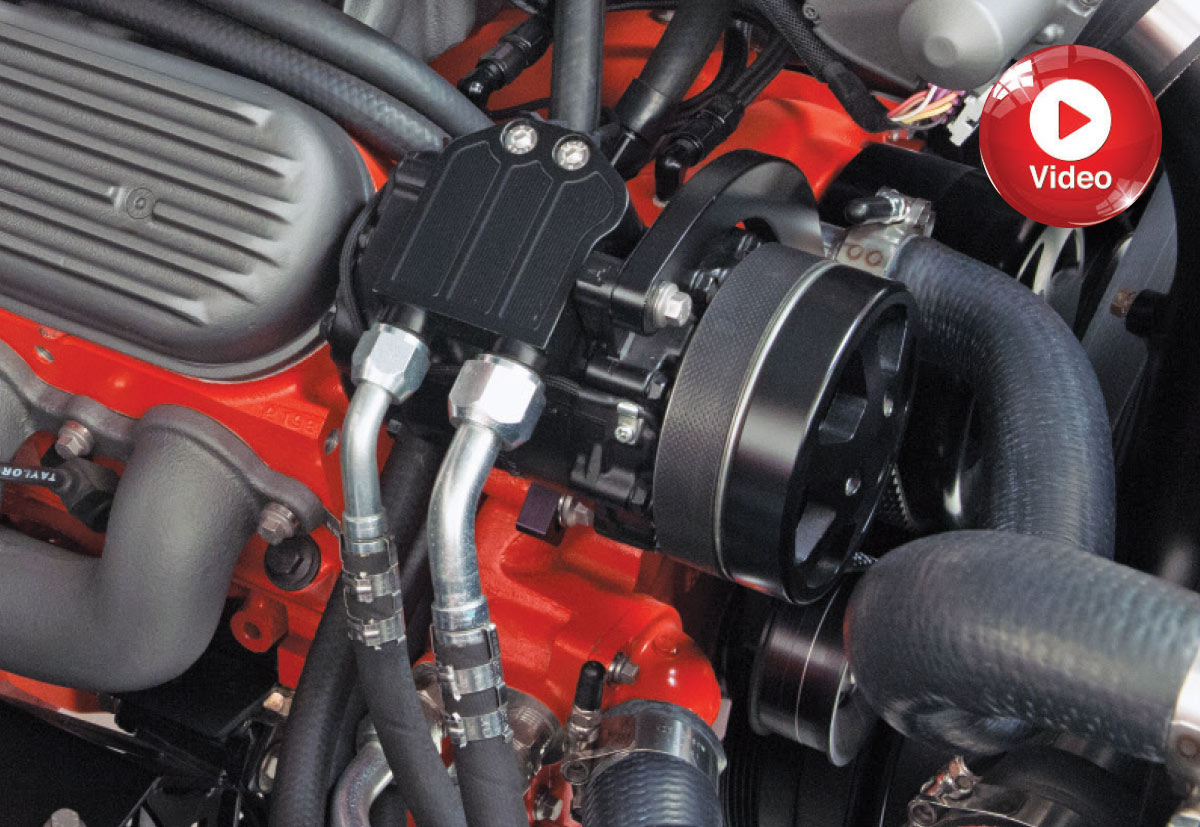
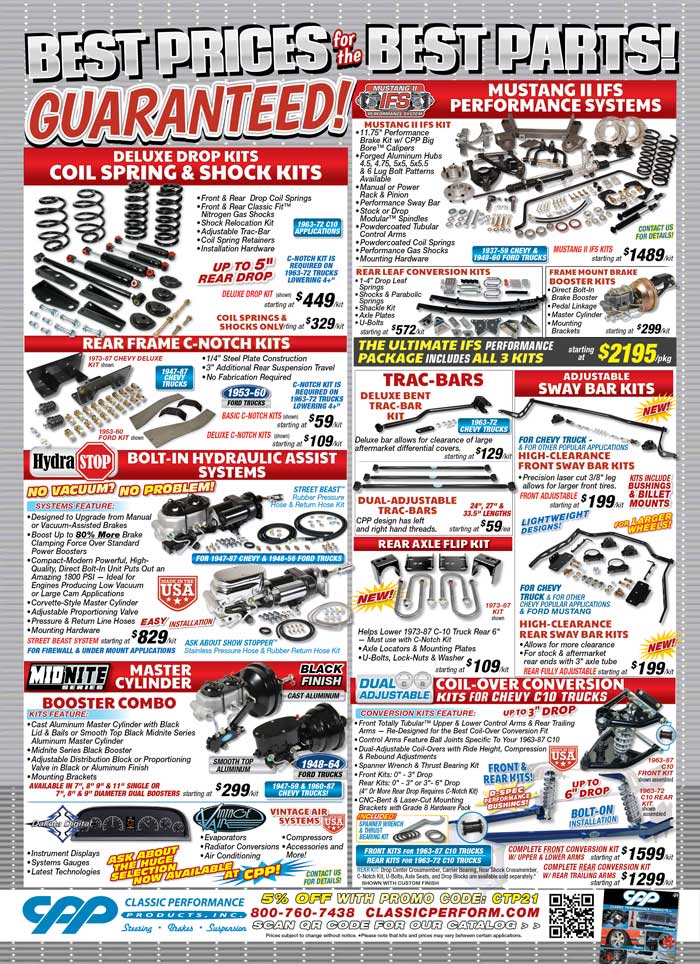

 BY
BY 